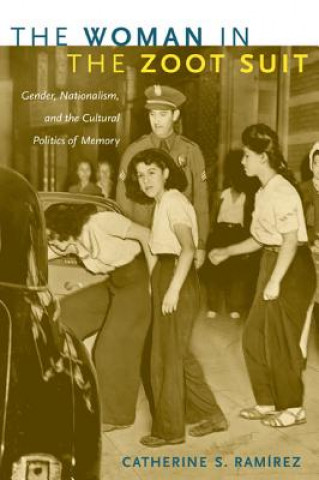
Doručení
Nákupní rádce





Nehodí se? Vůbec nevadí! U nás můžete do 30 dní vrátit
 Dárkový poukaz
V libovolné hodnotě
Dárkový poukaz
V libovolné hodnotě
S dárkovým poukazem nešlápnete vedle. Obdarovaný si za dárkový poukaz může vybrat cokoliv z naší nabídky.
Woman in the Zoot Suit
 Angličtina
Angličtina
 76 b
76 b
30 dní na vrácení zboží


The Mexican American woman zoot-suiter, or pachuca, often wore a v-neck sweater or a long, broad-shouldered coat, a knee-length pleated skirt, fishnet stockings or bobby socks, platform heels or saddle shoes, dark lipstick, and a bouffant. Or she donned the same style of zoot suit that her male counterparts wore. With their striking attire, pachucos and pachucas represented a new generation of Mexican American youth, one that emerged on the public scene in the 1940s. Yet while pachucos have often been the subject of literature, visual art, and scholarship, "The Woman in the Zoot Suit" is the first book focused on pachucas. Two events in wartime Los Angeles thrust young Mexican American zoot-suiters into the media spotlight. In the Sleepy Lagoon incident, a man was murdered during a mass brawl in August 1942. Twenty-two young men, all but one of Mexican descent, were tried and convicted of the crime. In the Zoot Suit Riots of June 1943, white servicemen attacked young zoot-suiters, particularly Mexican Americans, throughout Los Angeles. The Chicano movement of the 1960s-1980s cast these events as key moments in the political awakening of Mexican Americans and pachucos as exemplars of Chicano identity, resistance, and style. While pachucas and other Mexican American women figured in the two incidents, they were barely acknowledged in later Chicano-movement narratives. Catherine S. Ramirez recovers the neglected stories of pachucas, drawing on interviews with former zooters. Investigating the relative absence of pachucas in scholarly and artistic works, she argues that both wartime U.S. culture and the Chicano movement rejected pachucas because they threatened traditional gender roles. Ramirez reveals how pachucas challenged dominant notions of Mexican American and Chicano identity, how feminists have reinterpreted la pachuca, and how attention to an overlooked figure can disclose much about history-making, nationalism, and resistant identities.
Informace o knize
 Angličtina
Angličtina
Kategorie




 Jak nakupovat
Jak nakupovat















